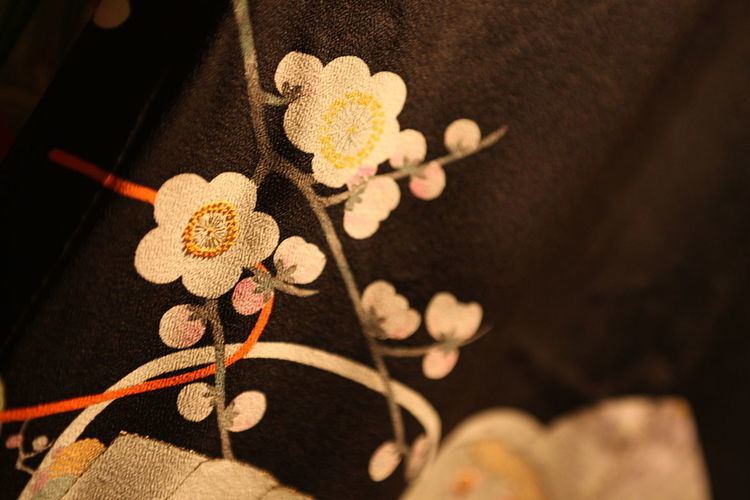 | ||
Yūzen (友禅染) is a Japanese dyeing technique for fabrics.
History
Silk-weaving families can be traced to the 15th century in the famous Nishijin weaving center of Kyoto, where elegant fabrics worn by the emperor and the aristocracy were produced. In the 17th century, designs on textiles were applied using stencils and rice paste, in the yūzen or paste-resist method of dyeing. The yūzen method provided an imitation of aristocratic brocades, which were forbidden to commoners by sumptuary laws.
Moriguchi Kako of Kyoto has continued to create works of art in his yūzen-dyed kimono, which were so sought after that the contemporary fashion industry designed an industrial method to copy them for use on Western-style clothing. Famous designers, such as Hanae Mori, borrowed extensively from kimono patterns for their couturier collections. By the late 1980s, an elegant, handwoven, dyed kimono had become extremely costly, running to US$25,000 for a formal garment. In Okinawa the famous yūzen-dyeing method was especially effective where it was produced in the bingata stencil-dyeing techniques, which produced exquisitely colored, striking designs as artistic national treasures.
Other methods of resist dyeing are rōketsuzome with wax, katazome and tsutsugaki with rice-paste.
Birodo yūzen, or yūzen birodo, describes velvet dyed and painted using the yūzen process where the pile is cut away in deep and light layers, creating a painterly effect of light and shade. The technique first appeared in the nineteenth century and was described in 1905 by Basil Hall Chamberlain. Although Chamberlain describes the technique under the heading of embroidery, birodo yūzen is not actually embroidered, but uses a cut-velvet technique to reproduce paintings and photographs. Although technically a form of velvet painting, birodo yūzen works are not like the Western and Middle-Eastern velvet paintings which use velvet as a canvas.
